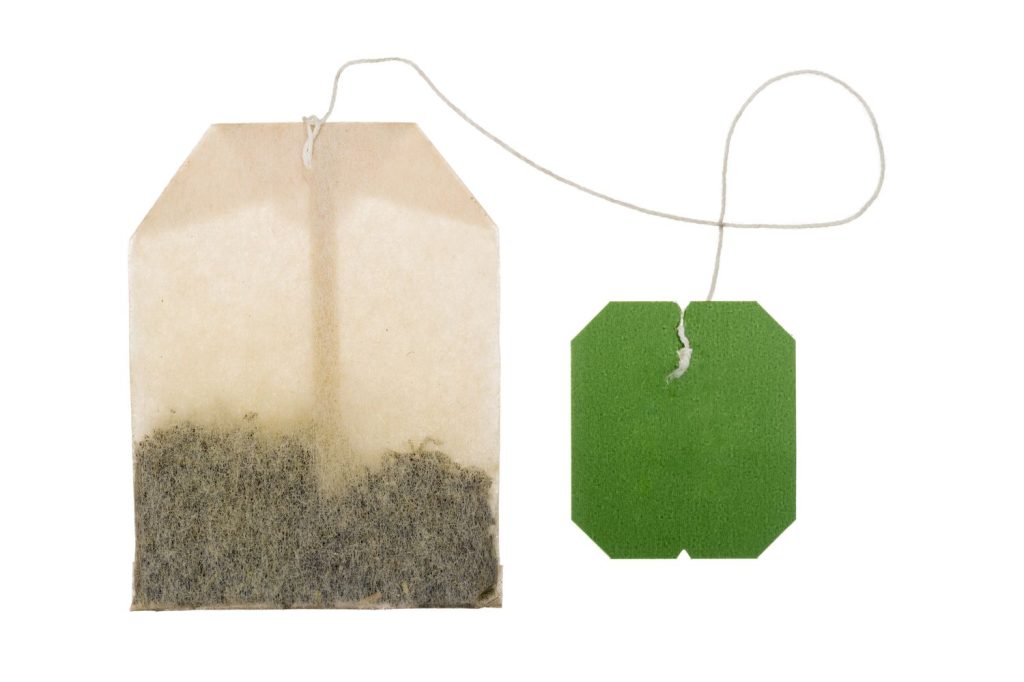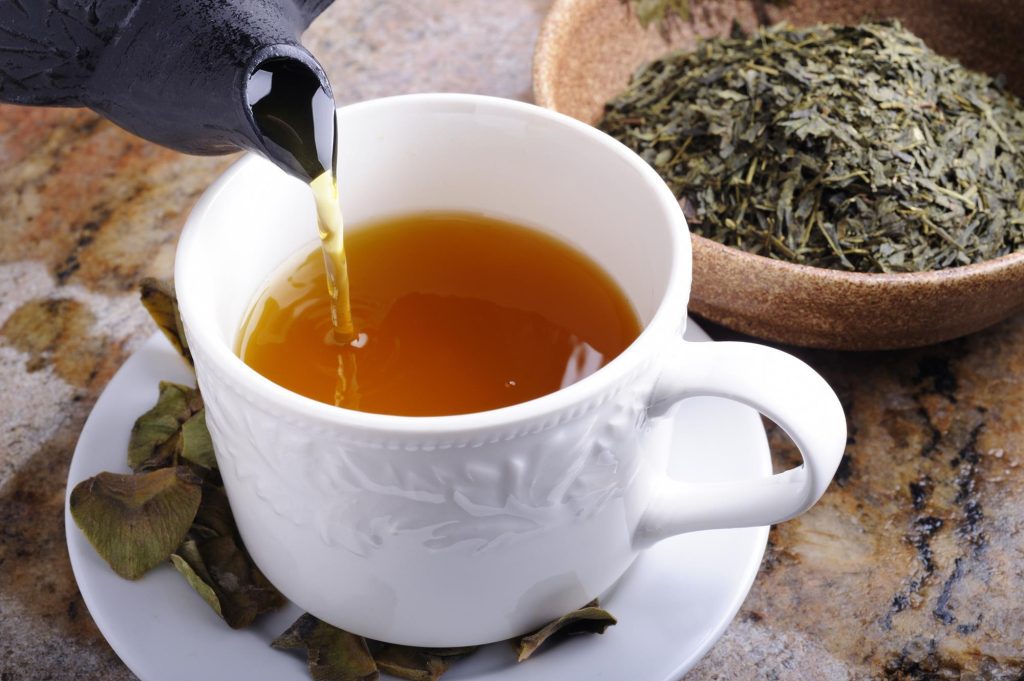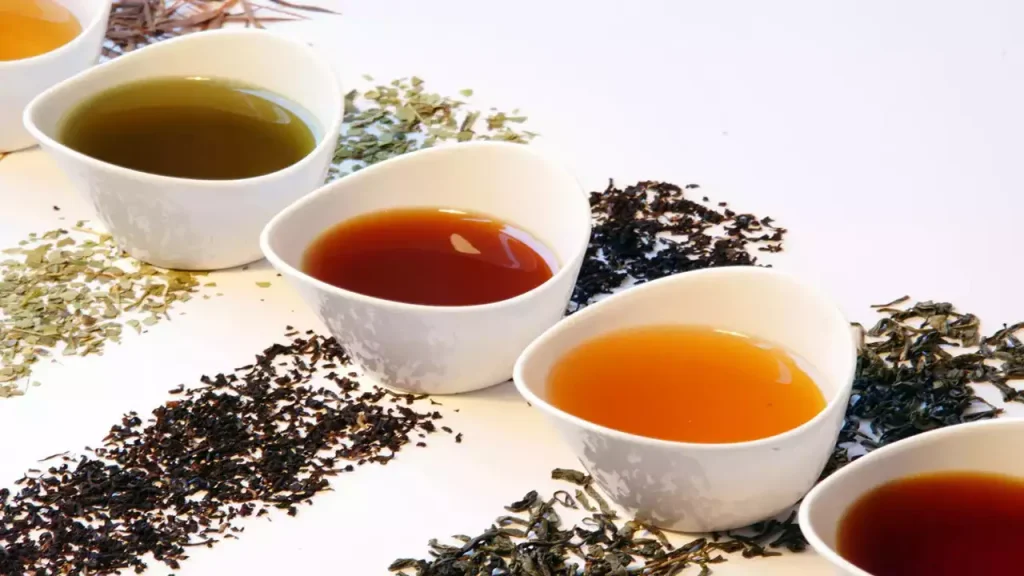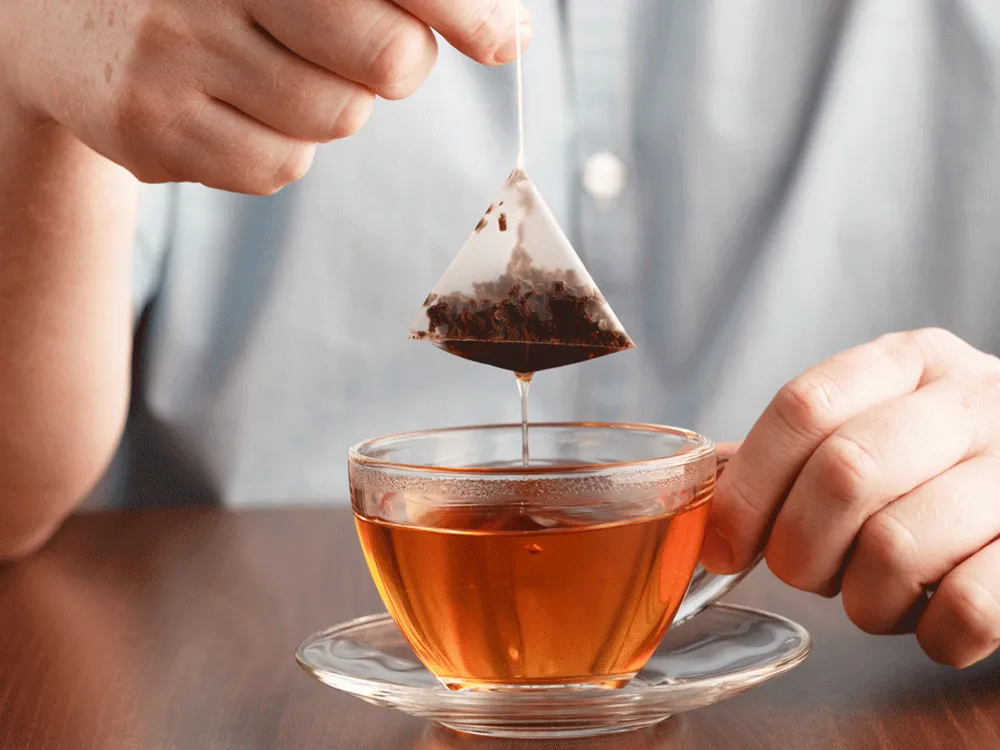The allure of tea, with its calming aroma and a vast array of flavors, has been a cornerstone of cultures worldwide for thousands of years. While traditional methods of preparing tea involved loose leaves and often elaborate rituals, the invention of the tea bag brought a revolutionary shift, combining the essence of this age-old beverage with the pace of the modern world.
The origins of the tea bag can be traced back to the early 20th century. As legend has it, the tea bag was serendipitously created when a tea merchant decided to send samples in silk bags. Instead of removing the leaves, some recipients placed the entire bag into the pot. Recognizing the potential for convenience, the concept of the tea bag was born. Over the years, it has evolved in form – from the hand-sewn silk bags of yesteryears to today’s commercially produced paper or mesh variants.
With our fast-paced lives, the tea bag has become synonymous with convenience. No longer does one need a teapot or strainer. Just a cup, hot water, and a tea bag, and you’re moments away from a soothing escape. However, even with its simplicity, the magic of tea remains. When the bag is immersed in warm water, it’s a spectacle – the water takes on color, swirls with intensity, and is imbued with flavors and aromas that have enchanted humankind for millennia.
Thus, this simple act of steeping a tea bag is more than just a mundane routine. It is a dance of elements, a blend of history and innovation, and most importantly, a testament to tea’s enduring charm. In the sections that follow, we delve deeper into the science and art behind this fascinating process.
The Components of a Tea Bag
Tea bags, though simple in appearance, are a culmination of thoughtful design, careful selection of materials, and an intricate blend of contents. Let’s unravel the components that make up a typical tea bag:
1. The Outer Material
- Paper: The most common material for tea bags is a special blend of hemp, abaca, and cellulose fibers. This ensures the bag is strong enough not to break when wet while allowing maximum diffusion of the tea’s flavors and aromas.
- Silk: Some high-end tea bags, especially pyramid-shaped ones, are made of silk or nylon mesh. These materials allow for larger tea leaves to expand fully and release their flavor more effectively.
- Plastic: A more recent and somewhat controversial addition to the tea bag world is plastic. While it offers a clear view of the tea inside, concerns have arisen over the potential leaching of microplastics into the tea.
- Environmentally Friendly Alternatives: With increasing environmental consciousness, there are also compostable and biodegradable options on the market, often made from materials like cornstarch or plant-based plastics.
Recommended: Does Panera Green Tea Have Caffeine?
2. The Contents
- Black, Green, White, and Oolong: These are the primary types of tea, each representing a different processing method of the Camellia sinensis plant. Their flavors range from robust and malty (black tea) to delicate and grassy (green tea).
- Herbal Infusions: Not all tea bags contain traditional tea leaves. Some hold herbs like chamomile, peppermint, or hibiscus. While not “tea” in the strictest sense, these infusions offer a caffeine-free alternative with their own unique flavors and health benefits.
- Added Ingredients: To create flavored teas, producers might add elements like dried fruits, spices (like cinnamon or cardamom), and even flower petals (like rose or lavender). These ingredients can enhance or complement the tea’s natural flavors.
- Tea Dust vs. Whole Leaves: The grade of tea in the bag can vary. Some bags contain finely ground tea (often called “fannings” or “dust”), which infuses quickly but can sometimes result in a more astringent brew. Others have whole or broken leaves, which generally provide a richer flavor profile.
The humble tea bag is thus a marvel of engineering, designed not only for convenience but also to ensure a delightful sensory experience with every cup. The choice of materials and ingredients plays a pivotal role in this, making the simple act of brewing tea a complex interplay of elements.

The Process of Diffusion
At the heart of the mesmerizing transformation that takes place when a tea bag meets hot water is a fundamental scientific principle called diffusion. This seemingly simple process is, in fact, one of nature’s most essential mixing mechanisms.
Understanding Diffusion
Diffusion is the movement of molecules from an area of high concentration to an area of low concentration until equilibrium is reached. Imagine a drop of ink in a glass of water – over time, the ink will spread out until the water has a uniform color. That’s diffusion in action.
When a tea bag is submerged in hot water, the water becomes the medium in which tea compounds (like flavors, colors, and aromas) spread. These compounds move from the tea leaves, where their concentration is high, into the surrounding water where initially, their concentration is zero.
Factors Influencing Diffusion in Tea Brewing
- Temperature: The warmer the water, the faster the molecules move, making the diffusion process quicker. That’s why hot water is preferred for brewing tea as it extracts flavors more efficiently.
- Steeping Time: The longer the tea bag sits in the water, the more time diffusion has to occur, resulting in a stronger brew. However, too long a steep can lead to over-extraction, making the tea overly bitter or astringent.
- Surface Area: Finely ground tea leaves, like fannings or dust, have a larger surface area exposed to the water, leading to faster diffusion. In contrast, whole leaves offer a more gradual release of flavors.
- Concentration Gradient: The steeper the difference in concentration between the tea leaves and the surrounding water, the faster the diffusion will occur. As the tea brews and the water becomes saturated, this gradient decreases, and diffusion slows.
Beyond Just Tea: Osmosis in Play
While diffusion focuses on the movement of solute (tea compounds), there’s also the movement of solvent (water) into the tea bag, especially if it contains dried fruit pieces or other ingredients that can absorb water.
This movement of water molecules from a region of low solute concentration (outside the tea bag) to a region of high solute concentration (inside the tea bag) through a semi-permeable membrane (tea bag material) is called osmosis.
Recommended: Is Chai Tea Good For Sore Throat?
Diffusion is nature’s gentle hand, stirring the pot without a spoon. The dance of molecules, driven by concentration gradients, ensures that every cup of tea offers a consistent blend of flavors, aromas, and warmth. The next time you steep a cup, take a moment to appreciate this natural marvel at work!
Role of Warm Water
The ritualistic act of pouring warm water over tea is more than just a step in the process—it’s the crucial element that activates the dance of flavors and aromas. Let’s delve into why warm water holds such significance in the world of tea brewing.
Awakening the Tea Leaves
- Reviving Dried Leaves: Tea leaves, whether in loose form or contained within a tea bag, are typically dried. Warm water rehydrates these leaves, allowing them to unfurl and release their bounty of flavors, colors, and aromas.
- Enhanced Solubility: Warm water acts as a solvent in which various compounds of tea become soluble. The higher the temperature, the more solubility it offers, ensuring that more compounds are released from the tea leaves.
The Temperature Spectrum and Its Impact
- Green and White Teas: These delicate teas often require a slightly cooler temperature, typically between 175°F to 185°F (80°C to 85°C). Too hot, and they can become overly bitter due to the rapid release of tannins.
- Black and Herbal Teas: These robust varieties can handle hotter temperatures, usually around 200°F to 212°F (93°C to 100°C), which allows for the full extraction of their rich flavors and aromas.
- Oolong Tea: Oolong, being a middle-ground between green and black teas, prefers a mid-range temperature, often between 185°F to 205°F (85°C to 96°C).
The Science Behind Warm Water
- Molecular Movement: The heat in warm water agitates its molecules, making them move more rapidly. This increased kinetic energy helps in faster and more effective diffusion of the tea compounds.
- Activation of Chemical Reactions: Certain compounds in tea, like antioxidants and polyphenols, might require a specific temperature threshold to be effectively released. Warm water ensures these thresholds are met, unlocking the health benefits and flavors of the tea.
Consistency is Key
- Investing in a Thermometer: For tea connoisseurs, having a thermometer to check water temperature can elevate the brewing experience, ensuring consistency and the perfect brew each time.
- The Cool-down Trick: If boiling water is all you have but you need a cooler temperature for your tea, letting it sit for a few minutes or pouring it back and forth between cups can help bring down the temperature to the desired range.
Recommended: 5 Best Weight Loss Tea For Breastfeeding Mothers
In essence, warm water is not just a medium in which tea brews – it’s a catalyst, an enabler, and an enhancer. The nuances in temperature can make or break the quality of the infusion, highlighting the importance of this seemingly simple component in the age-old art of tea brewing.

The Release of Compounds from the Tea Leaves
Tea, despite its simplicity in preparation, is a complex concoction of chemical compounds. Each steep releases a variety of these compounds, resulting in the unique taste, aroma, and color we associate with our brew.
Let’s explore this intricate tapestry woven by tea leaves when they meet warm water:
1. Tannins: The Backbone of Flavor
Tannins, primarily theaflavins and thearubigins in tea, are polyphenolic compounds responsible for the astringency and body of the brew.
While essential for giving tea its character, over-extraction of tannins, especially in black tea, can lead to an overly bitter and astringent taste.
2. Caffeine: The Energizer
Caffeine is a natural alkaloid present in tea leaves. It’s known to stimulate the central nervous system, providing the alertness many seek from their morning or afternoon tea.
The caffeine content in tea can vary based on the type of tea, where it’s grown, and how it’s processed. For instance, younger tea leaves generally contain more caffeine than older leaves.
3. Antioxidants: Nature’s Shield
Tea is rich in antioxidants, particularly catechins in green tea, which are known for their health benefits, including combating free radicals in the body.
Regular consumption of tea, especially green tea, has been linked to reduced risks of certain diseases, thanks to these potent antioxidants.
4. Essential Oils: Aromatherapy in a Cup
The essential oils in tea, primarily terpenes, are responsible for its delightful aroma. These volatile compounds are released when tea leaves come into contact with warm water.
Proper storage of tea is crucial to preserving these oils. Exposure to air can cause them to evaporate, diminishing the aromatic quality of the tea.
5. Amino Acids & Proteins: The Umami and More
Theanine: This amino acid, found primarily in tea, contributes to the “umami” flavor profile, especially in high-quality green teas like Gyokuro. It also has a calming effect on the brain, counterbalancing caffeine’s stimulative properties.
Proteins: While present in small amounts, proteins in tea can influence the body and mouthfeel of the brew.
6. Minerals and Vitamins: Hidden Nutrients
Tea contains trace amounts of minerals like potassium, calcium, magnesium, and fluoride, contributing both to health benefits and subtle flavor notes.
While not in large quantities, vitamins like B2, C, and E can be found in tea, especially when freshly brewed.
Recommended: About Green Tea & Its Amazing Health Benefits And Side Effects
The magic of tea lies in this multifaceted release of compounds, each bringing its own character to the brew. Whether it’s the invigorating effect of caffeine, the deep flavors from tannins, or the tantalizing aromas of essential oils, every sip is a testament to the rich chemistry within those leaves.
Steeping Time and Its Impact
Steeping is the heart of the tea-making process. The duration for which tea leaves are allowed to be immersed and infused in warm water can significantly alter the outcome of the brew, from its flavor and aroma to its color and health benefits.
Let’s delve into the nuances of steeping time and understand its profound impact:
1. The Basic Principle
- Decoding Steeping: At its core, steeping is the interaction of water with tea leaves, allowing the extraction of the various compounds present in the leaves.
- Time as a Factor: The longer the steeping time, the more compounds are extracted. However, there’s a fine balance to strike to avoid over or under-extraction.
2. Impact on Flavor Profile
- Initial Release: In the early moments of steeping, the tea releases its delicate flavors and aromas, particularly the essential oils and lighter aromatic compounds.
- Extended Steeping: As time progresses, denser compounds like tannins become more pronounced. While they add body and depth to the tea, an extended steep can result in a brew that’s overly bitter or astringent.
3. Aroma and Color Dynamics
- Rapid Release: Volatile aromatic compounds tend to be released quickly, filling the air with the signature scent of the tea.
- Deepening Hue: The color of the tea deepens with time as more polyphenolic compounds, like theaflavins and thearubigins, are released, often turning the brew from a light hue to a richer shade.
4. Nutritional and Health Impacts
- Quick Infusions: Shorter steeping times tend to release a higher concentration of antioxidants and amino acids like theanine.
- Longer Steeps: Prolonged steeping can lead to a higher caffeine content in the brew. While this might be desirable for those seeking an energy boost, others might prefer a milder cup.
5. The Role of Tea Type
- Delicate Teas: Green and white teas often require shorter steeping times (1-3 minutes) to capture their nuanced flavors without introducing bitterness.
- Robust Teas: Black and herbal teas can endure (and often require) longer steeping times (3-5 minutes) to fully express their character.
- Oolongs & Specialty Teas: Oolong teas and certain specialty teas have their own recommended steeping times, often falling in the mid-range, but they can also be re-steeped multiple times to reveal evolving flavor profiles.
6. Personal Preferences
- Experimentation is Key: While there are general guidelines for steeping times, individual preferences play a huge role. It’s encouraged to experiment to find one’s perfect brew.
- Adjusting Strength: For those who prefer milder tea, reducing the steeping time or using fewer tea leaves can help. Conversely, for a stronger brew, increasing the time or quantity of tea can be effective.
Recommended: 9 Things About Kratom You Didn’t Know
In the end, steeping is both an art and a science. While understanding the principles behind it can guide us towards a delightful cup, it’s the personal touch and individual preferences that make each brew unique. Remember, there’s no right or wrong when it comes to steeping – just the pursuit of your perfect cup!

Factors that Influence Tea Extraction
Tea extraction is a delicate dance of elements, where several factors come into play to produce the flavors, aromas, and hues that make each cup unique. While steeping time and water temperature are vital, they’re just part of a bigger picture.
Let’s delve into the various factors that influence the extraction process in tea brewing:
1. Size and Shape of Tea Leaves
- Whole Leaves vs. Fannings: Whole leaves generally offer a slower, more nuanced extraction due to their larger size, while fannings or dust (smaller fragments) provide a quicker extraction due to increased surface area.
- Rolling and Processing: The way tea leaves are processed can also influence extraction. Tightly rolled teas, like pearls or oolongs, unfurl slowly, gradually releasing their flavors.
2. Freshness of the Tea
- Age Matters: Fresh tea leaves, especially those stored properly, retain their essential oils and flavors better, ensuring a richer extraction. Aged teas, unless specifically meant for aging like certain pu-erhs, may offer a muted flavor profile.
- Oxidation: Over time, especially if exposed to air, tea leaves can oxidize, affecting the taste and the compounds that get extracted.
3. Hardness and Mineral Content of the Water
- Soft vs. Hard Water: Soft water, which has low concentrations of calcium and magnesium, is often preferred for brewing tea as it extracts flavors more cleanly. Hard water can sometimes mask subtle flavors due to its mineral content.
- Water Purity: The presence of impurities or excessive chlorination in water can adversely affect the taste of the tea. Using filtered or spring water can make a noticeable difference.
4. The Material of the Brewing Vessel
- Heat Retention: Materials like cast iron or ceramic retain heat well, maintaining a consistent temperature during the brewing process, which can affect extraction.
- Reactivity: Some metals can react with tea compounds, altering the taste. This is why brewing vessels made of glass, porcelain, or non-reactive metals are often recommended.
5. Agitation During Brewing
- Stirring and Movement: Agitating the tea, either by stirring or swirling, can speed up the extraction process as it increases the interaction between water and tea leaves.
- The Impact of Pouring: The height and manner in which water is poured can introduce varying levels of oxygen, which can influence how flavors and aromas are released.
6. Ambient Conditions
- Atmospheric Pressure: In high-altitude areas, water boils at a lower temperature, which can affect the extraction dynamics, especially for teas that require hotter temperatures.
- Humidity and Storage: The environment where the tea is stored before brewing can impact its moisture content and freshness, influencing extraction.
Recommended: What Do Protein Shakes Do For Females? The Complete Guide
Crafting the perfect cup of tea is a journey of understanding and experimentation. Recognizing the factors that influence extraction allows for greater control over the brewing process, but it’s the personal touch, intuition, and preferences that turn the act into an art. Whether you’re a seasoned tea enthusiast or a curious novice, each cup offers a new opportunity to refine and revel in the age-old ritual of tea brewing.
Advantages and Disadvantages of Using Tea Bags
Tea bags, since their inadvertent invention in the early 20th century, have become a global phenomenon. Representing convenience and quick preparation, they’ve made their mark in homes, offices, and cafes around the world. But like everything, they come with their pros and cons.
Let’s explore both sides of the coin:
Advantages of Using Tea Bags
1. Convenience and Speed
- Quick Brew: Tea bags offer a fast infusion, perfect for on-the-go or busy mornings.
- No Need for Tools: There’s no requirement for tea infusers, strainers, or other specialized tools.
2. Portability
- Travel-friendly: Individually wrapped tea bags can be carried in a purse, pocket, or suitcase without fuss.
- Perfect for Offices: Their mess-free nature makes them ideal for office settings.
3. Consistency
- Pre-measured Portions: Each tea bag contains a set amount of tea, ensuring consistency in the strength of every brew.
4. Broad Availability
- Variety and Choice: From supermarkets to cafes, tea bags are available in a myriad of flavors, catering to diverse palates.
- Affordability: Often, tea bags are more economical than their loose-leaf counterparts, making them accessible to a wider audience.
Disadvantages of Using Tea Bags
1. Quality Concerns
- Tea Dust and Fannings: Many commercial tea bags contain dust and fannings from broken tea leaves, which can result in a less nuanced flavor compared to whole-leaf teas.
- Less Freshness: The smaller particles in tea bags can lose flavor and aroma faster than whole leaves.
2. Environmental Concerns
- Waste Generation: Each tea bag, especially if individually wrapped, generates waste.
- Plastic in Tea Bags: Some tea bags contain plastic, which when steeped, can leach microplastics into the brew.
3. Limited Customization
- Fixed Quantity: Unlike loose-leaf tea where you can adjust the quantity as per preference, tea bags come with a fixed amount.
- Single Use: Most tea bags are meant for one-time use, unlike certain loose leaves that can be re-steeped.
4. Restricted Leaf Expansion
- Constrained Space: The confined space of a tea bag can limit the full expansion of tea leaves, potentially inhibiting the release of all flavors and aromas, especially for larger-leaf teas.
While tea bags provide unmatched convenience, they do come with trade-offs. For the casual drinker, they might be perfect, but for tea aficionados, the allure of loose-leaf teas – with their rich flavors and intricate brewing rituals – often proves irresistible.
Recommended: Flat Tummy Water While Breastfeeding: The Healthy Way To Lose Baby Weight
The choice, as always, lies in individual preferences and priorities. Whether it’s the simplicity of a tea bag or the artisanal touch of loose leaves, the world of tea offers something for everyone.
Conclusion
The journey of tea, from leaf to cup, is a blend of art and science. Whether it’s the convenience of a tea bag or the ritualistic pleasure of loose leaves, each brew tells a story of culture, history, and personal preference.
The myriad factors influencing its extraction – steeping time, temperature, leaf size, and more – make each cup a unique experience. As you sip your next brew, take a moment to appreciate the complexities behind its creation, and revel in the timeless charm that is tea.
